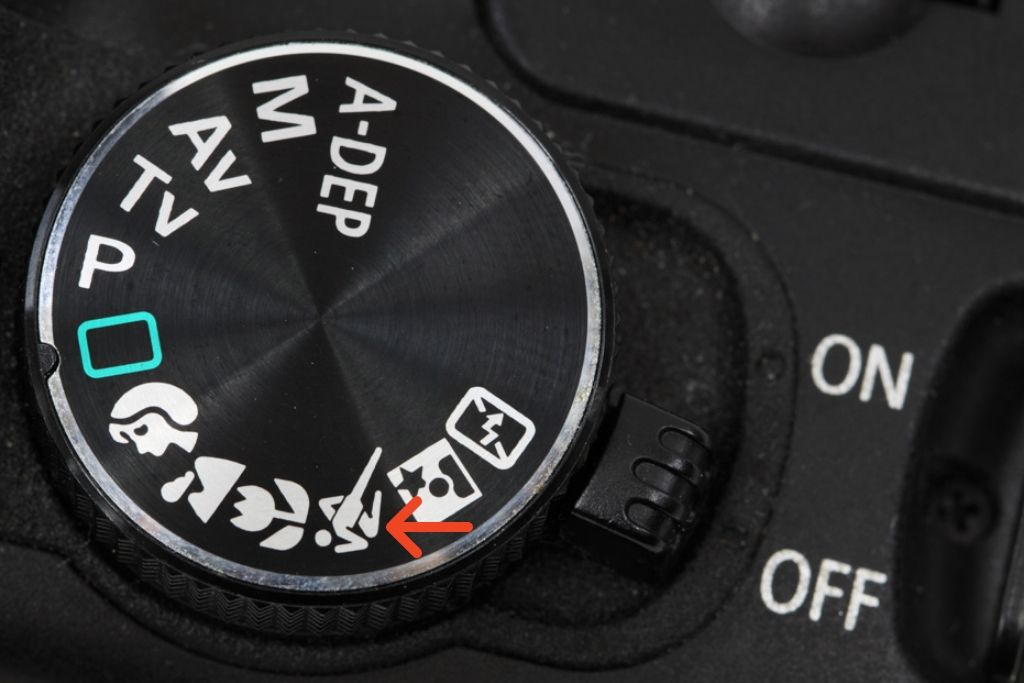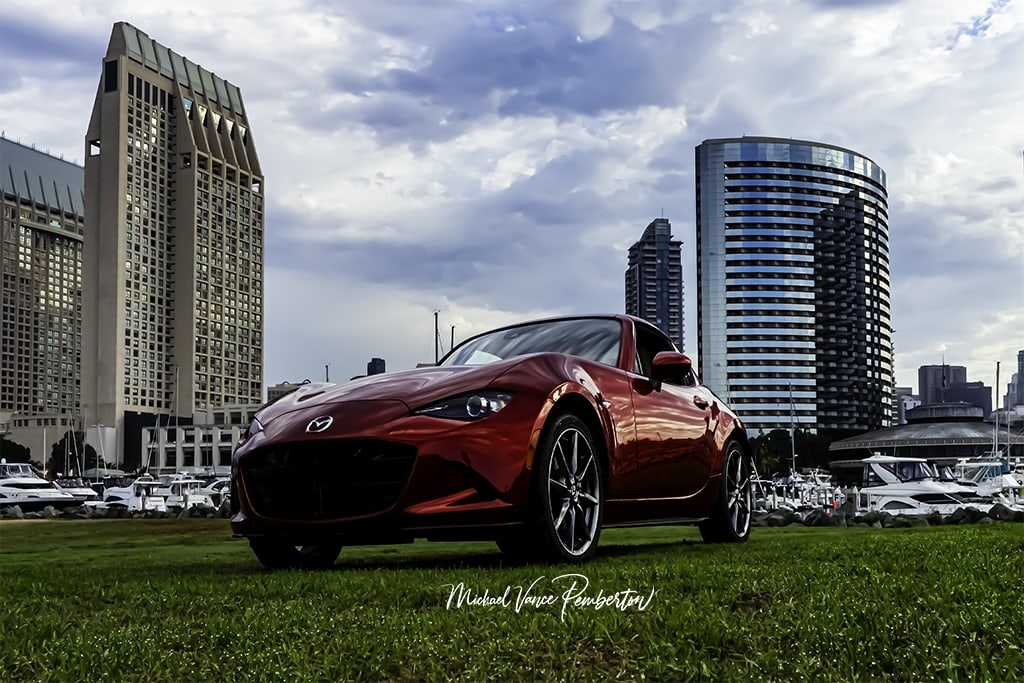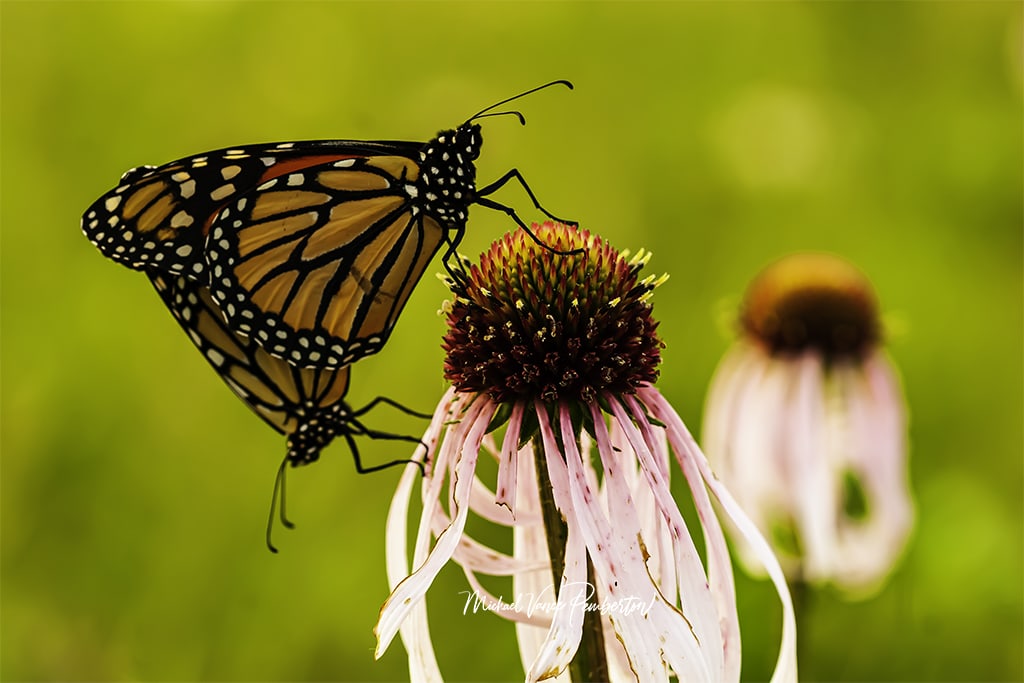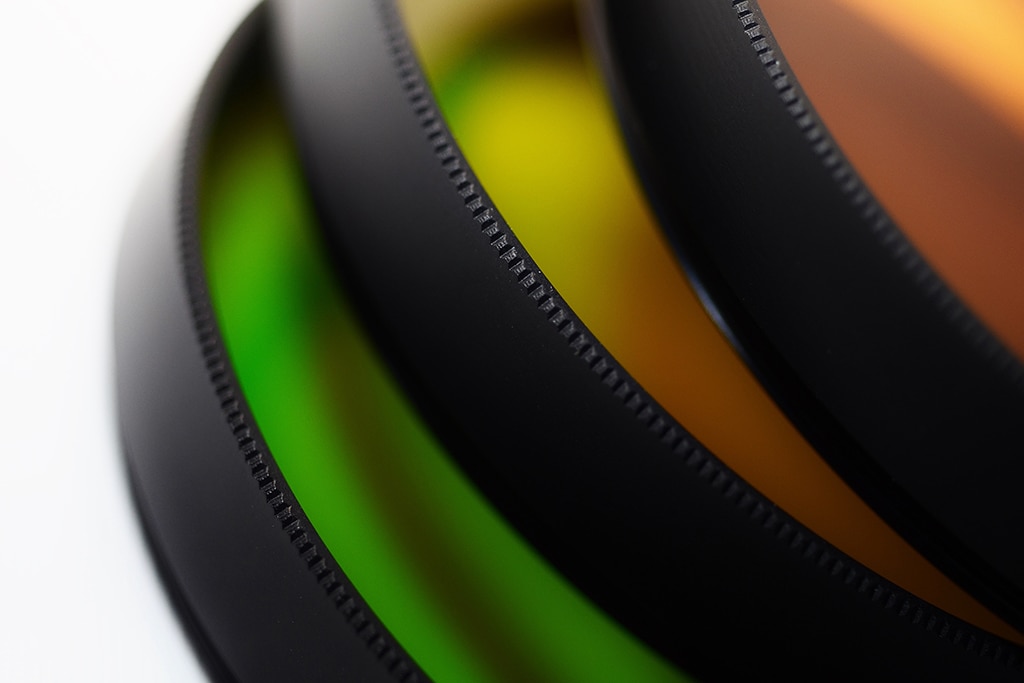
Creative modes on a camera refer to a set of specialized shooting modes that enable photographers to experiment with various artistic and technical aspects of their photography. These modes go beyond the basic automatic and semi-automatic settings, allowing photographers to exercise greater control over their images and produce unique and visually engaging results. Creative methods empower beginners and experienced photographers to explore their creativity and capture stand-out photos.

Aperture Priority (A/Av Mode):
Aperture Priority (A/Av Mode) is a versatile and creative shooting mode that places you in command of one of the fundamental components of exposure: the aperture. The aperture refers to the opening in the camera’s lens through which light enters the camera and reaches the image sensor. By adjusting the aperture setting, you influence the amount of light that goes to the sensor, which significantly impacts the overall exposure of your photograph.
However, the beauty of Aperture Priority mode lies in its ability to let you express your artistic vision through control over the depth of field. Depth of field refers to the range of distances in a photograph that are in acceptable focus. A wider aperture (represented by a lower f-number, e.g., f/1.8) results in a shallower depth of field, where the subject is in sharp focus while the background is beautifully blurred. This effect, often called “bokeh,” is sought after for portrait photography, where the subject stands out prominently against a dreamy and indistinct backdrop.
On the other hand, a narrower aperture (higher f-number, e.g., f/16) increases the depth of field, ensuring that both the subject and the background are relatively sharp. This is particularly useful in landscape photography, where you want to capture intricate details from the foreground to the distant elements.
Aperture Priority mode frees you from the technical complexities of calculating the proper shutter speed for a given aperture, as the camera automatically adjusts the shutter speed to achieve the correct exposure. This allows you to concentrate on the creative aspect of your photography, composing your shots and selecting the ideal aperture to craft the desired visual impact. Whether striving for a stunning bouquet of blurry lights in a cityscape or aiming to create a landscape image with maximum sharpness throughout, the Aperture Priority mode empowers you to wield the creative potential of the aperture setting to its fullest extent.
Incorporating Aperture Priority mode into your photographic workflow lets you go beyond simple point-and-shoot photography. It encourages you to consider the interplay between aperture, depth of field, and the subject’s relationship with its surroundings. By thoughtfully manipulating these elements, you can tell stories, evoke emotions, and bring an extra layer of artistry to your images, making each photograph a unique and expressive visual communication work.

Shutter Priority (S/Tv Mode):
Shutter Priority (S/Tv Mode) is a dynamic and creative shooting mode that places you in direct control of one of the critical components of exposure: the shutter speed. The shutter speed refers to the length of time that the camera’s sensor is exposed to light. It plays a pivotal role in capturing motion within a photograph, whether freezing a fast-moving subject in sharp detail or intentionally introducing a sense of motion blur to convey a feeling of dynamic energy.
By choosing Shutter Priority mode, you can command the shutter speed while the camera automatically adjusts the aperture to achieve proper exposure. This mode is particularly advantageous when dealing with subjects in motion, as it allows you to precisely dictate how much motion is captured in the final image.
When you select a faster shutter speed, such as 1/1000th of a second, moving subjects like athletes, wildlife, or vehicles can be frozen in mid-action, producing crisp and detailed photographs that freeze moments the human eye might otherwise miss. This is especially valuable for sports photography, where capturing split-second moments is paramount.
On the other hand, opting for a slower shutter speed, like 1/30th of a second, introduces motion blur to your images. This technique can be creatively employed to convey a sense of movement. For example, in a cityscape, slower shutter speeds can transform bustling traffic into streaks of light, giving the scene a feeling of liveliness and energy. When photographing flowing water, like waterfalls or rivers, longer shutter speeds can render the water smooth and silky, creating a serene and ethereal mood.
Shutter Priority mode allows you to experiment with different shutter speeds and achieve a wide range of effects. Whether aiming to capture a dramatic action shot, create a sense of calm in a busy scene, or experiment with artistic long-exposure products, Shutter Priority mode empowers you to control how motion is portrayed in your photographs.
By mastering this mode, you can elevate your photography to new levels of creativity and expressiveness. It encourages you to consider the relationship between time, motion, and visual storytelling, enabling you to produce images that document moments, evoke emotions, and capture the essence of movement in all its forms.

Manual Mode (M):
Manual Mode (M) is the pinnacle of creative control in photography, granting you complete authority over the aperture and shutter speed settings. It’s a mode that empowers photographers with a profound understanding of exposure principles to craft images with unparalleled precision and artistry. Unlike semi-automatic modes, Manual Mode requires you to manually set both the aperture and shutter speed, allowing you to achieve the exact look you envision, even in the most complex lighting scenarios.
Delving into Manual Mode demands a solid grasp of the exposure triangle—the relationship between aperture, shutter speed, and ISO. These three factors are interdependent, and adjusting one affects the others. As a photographer in Manual Mode, you essentially orchestrate a delicate balance between these elements to achieve the desired exposure. This mode is often favored by experienced photographers who relish overcoming exposure obstacles and capturing their subjects with unrivaled control.
The appeal of Manual Mode becomes particularly evident when facing challenging lighting conditions. In situations where the lighting is uneven, extreme, or constantly changing—such as during golden hour, night photography, or high-contrast scenes—Manual Mode provides the flexibility to fine-tune your settings to capture both highlights and shadows precisely as you want them. This level of control can be crucial when shooting subjects against a bright background, ensuring your issue is correctly exposed without being overshadowed.
Photographers who gravitate towards Manual Mode often do so because of their dedication to storytelling through imagery. By manually selecting both the aperture and shutter speed, you can create intentional effects such as shallow depth of field for selective focus or specific motion blur to convey movement. The mode encourages an immersive understanding of your camera’s capabilities, fostering a deeper connection between your technical skills and creative vision.
While Manual Mode has a steeper learning curve, the rewards are immense. It offers unparalleled personalization and innovation in your photography, allowing you to craft images that are not just correctly exposed but also profoundly expressive and reflective of your artistic sensibilities. As you refine your skills in this mode, you embark on a journey of mastery, pushing the boundaries of your creativity and cultivating a distinct visual style that truly sets your work apart.

Program Mode (P):
Program Mode (P) offers photographers a balance between creative control and automation, making it a versatile choice for various shooting situations. In this semi-automatic mode, the camera is responsible for selecting both the aperture and shutter speed, analyzing the scene’s lighting conditions to determine the most suitable exposure settings. This automated approach ensures a correct exposure without manually calculating the individual locations.
Program Mode is particularly useful in scenarios where you must capture shots quickly, such as candid moments or rapidly changing scenes. It allows you to focus more on composition and framing, as the camera takes care of the technical aspects of exposure. This can be particularly helpful for photographers still gaining confidence in adjusting settings on the fly.
Despite the camera’s automatic aperture and shutter speed selection, Program Mode doesn’t confine you to these settings. One of the key advantages of this mode is the flexibility it offers. You can still adjust other essential parameters, such as ISO and exposure compensation. ISO controls the camera’s sensitivity to light, allowing you to adapt to changing lighting conditions or achieve specific aesthetic effects.
Exposure compensation is another crucial tool at your disposal in Program Mode. If the camera’s automatic settings don’t align with your creative vision, exposure compensation enables you to adjust. For instance, if you’re capturing a scene with a lot of white snow, the camera might underexpose the image due to its attempt to average the exposure. You can then use exposure compensation to override this automatic adjustment and ensure the snow appears white, not gray.
Program Mode is a great stepping stone for transitioning from fully automatic modes to more advanced shooting techniques. It encourages a gradual exploration of manual adjustments while providing a safety net of automatic exposure settings. It allows you to capture well-exposed images while granting you room to refine your photography skills and gradually gain confidence in taking greater creative control.
Program Mode combines automation and creative flexibility, making it a go-to choice when speed is essential, or you want to simplify the process without sacrificing the potential for personalized adjustments. Program Mode can serve as a foundation for experimenting with more manual settings and honing your craft as you become more adept in your photography journey.

Scene Modes:
Modern cameras often have various pre-set scene modes, each carefully designed to optimize settings for specific shooting scenarios. These modes are like shortcuts that allow photographers to effortlessly adapt their camera settings to match the requirements of various situations. Designed with convenience, these scene modes are a valuable tool, especially for individuals just starting out in photography or those who prefer a more streamlined approach to capturing different scenes.
For instance, when aiming to capture a striking portrait, activating the “Portrait” scene mode will automatically configure settings that enhance skin tones, soften backgrounds through wider apertures, and create an overall pleasing aesthetic. This eliminates the need for newcomers to delve into the intricacies of aperture and white balance, allowing them to focus solely on framing their subject and capturing their essence.
Similarly, the “Landscape” scene mode optimizes settings for scenarios where capturing expansive vistas with intricate detail is the goal. The camera might prioritize a smaller aperture for greater depth of field, enhancing the sharpness from foreground to background and potentially adjusting color saturation to bring out the vibrancy of the landscape.
Scene modes also cater to more specialized situations. For instance, “Sports” mode can ensure fast shutter speeds to freeze action, while “Night Photography” mode might use slower shutter speeds to capture the ambiance of low-light scenes without excessive noise. These modes act as helpful starting points for achieving good results in situations that might otherwise pose challenges, all while sparing users the complexities of manually selecting settings.
While scene modes undoubtedly simplify capturing specific scenes, they’re not limited to beginners. Even experienced photographers can benefit from these modes when time is of the essence, or they want a quick reference for settings tailored to a particular scene. They can also serve as a valuable learning tool, as users can observe the camera’s choices and gradually gain insights into how various settings contribute to achieving desired results.
However, it’s important to note that while scene modes offer convenience, they come with limitations. They work best in situations that align closely with their intended purpose but may need to be more effective in complex or nuanced scenarios. Additionally, using these modes might hinder your growth as a photographer by limiting your understanding of the technical aspects contributing to achieving specific effects.
Pre-set scene modes are valuable to modern cameras, offering an accessible way to capture well-optimized images in various scenarios. They cater to the needs of photographers at different skill levels, from newcomers seeking quick results to seasoned photographers seeking efficient solutions. Balancing their convenience with a broader understanding of manual settings can help photographers make the most of these modes while continuing to expand their photographic skills.

Creative Filters and Effects:
In the digital age of photography, creative expression is not limited to post-processing alone. Many cameras now come equipped with many built-in creative filters or effects, which can be applied to images in real time as you capture them. This innovative feature opens up exciting avenues for photographers to infuse their images with a dash of originality and experimentation without needing to rely on complex editing software after the fact.
Creative filters and effects function like digital transformations that alter the appearance of your photographs directly from your camera’s viewfinder. These filters are designed to simulate various artistic techniques and styles, effectively offering a range of visual experiences at your fingertips. From altering colors to adding textures and creating surreal atmospheres, these features enable photographers to push the boundaries of traditional photography and explore new artistic realms.
For example, a “Vintage” filter might mimic the warm tones, vignetting, and graininess associated with analog film photography, evoking a nostalgic and timeless feel. Alternatively, a “Cross-Processing” effect could juxtapose unexpected color shifts, resulting in an image with an edgy and unconventional appearance.
Texture overlays are another captivating facet of these filters. They can simulate effects like watercolor painting, impressionist brushstrokes, or even the look of canvas, adding tactile dimensions to your images. These textures can significantly alter the visual mood of a photo, from dreamy and ethereal to bold and dramatic.
Furthermore, creative filters can offer specialized effects like tilt-shift simulation, which can make scenes appear as part of a miniature world, or fisheye distortion, which adds a unique curvature to the image, enhancing the visual impact of specific subjects.
Real-time application of these filters allows photographers to preview the effect before capturing the shot, providing an immediate connection between vision and result. This can be particularly advantageous when experimenting with different looks or aiming to evoke specific emotions in the viewer.
While these built-in filters are a captivating feature, they aren’t intended to replace the skills of traditional photography or post-processing. Instead, they provide a playground for photographers to break away from conventions, discover their preferences, and explore unconventional creative directions. By incorporating these filters into their photographic toolbox, photographers can enhance their ability to convey stories, emotions, and concepts through their imagery, fostering a deeper connection between their artistic vision and the final photograph.
Including built-in creative filters and effects in cameras amplify the opportunities for photographers to push their boundaries and experiment with diverse visual styles. These features enable photographers to step beyond traditional photography, opening the door to instant creative transformation and discovery right at the moment of capture.

Multiple Exposures:
The multiple exposure mode in advanced photography is a gateway to artistic innovation and imaginative storytelling. This captivating feature, available in select high-end cameras, empowers photographers to blend the boundaries between reality and abstraction by combining multiple images into a single frame. The result is a visually captivating composition that weaves together different scenes, subjects, or moments, transforming them into a harmonious and often surreal narrative.
The concept of multiple exposures originated in film photography, where photographers would expose the same frame multiple times to create layered and ghostly images. In the digital age, this technique has been adapted and enhanced with dedicated modes built into cameras, allowing photographers to achieve complex compositions with precision and control.
The multiple-exposure mode invites photographers to explore the juxtaposition of diverse elements by capturing a series of exposures on a single frame. Imagine merging the silhouette of a towering tree against the backdrop of a starlit night sky or seamlessly blending the fluid motion of flowing water with the solidity of a stationary subject. These combinations can result in enchanting and evocative visuals that transcend the limitations of conventional single-frame photography.
The mode often enables photographers to adjust settings like exposure compensation, seamlessly blending images with varying brightness levels.
This feature is precious when merging shots taken in different lighting conditions, ensuring a seamless transition between the different components of the composition.
The artistic possibilities of multiple exposure modes are virtually limitless. Photographers can create dreamlike portraits by superimposing a subject onto abstract textures or craft intricate landscapes by layering different scenes to create a new reality. The model also offers an avenue to express concepts and emotions that might be challenging to capture with a single image.
Incorporating this mode into your creative toolkit requires technical understanding and a strong visual imagination. It encourages photographers to envision how different elements will interact and complement each other in the final composite. The process involves experimentation, as photographers blend different frames to achieve the desired outcome.
This trial-and-error approach fosters a deeper understanding of composition, visual harmony, and storytelling within the medium of photography.
In essence, the multiple exposure mode beckons photographers to push their creativity to new heights, inviting them to step beyond the confines of a single click and engage in a dialogue between multiple frames. The resulting images showcase the limitless potential of combining imagination, technical finesse, and a profound connection to the art of photography. As photographers explore this mode, they embark on a journey of crafting images that are visually captivating and tell a multi-layered story that resonates with viewers on a profound level.

Bulb Mode:
Bulb mode, an intriguing feature found in many advanced cameras, is a gateway to the world of extended exposure times that go beyond the constraints of standard shutter speed settings. This mode allows photographers to capture time in a way that unveils the hidden beauty of motion and light, leading to stunning visual effects that are impossible to achieve with conventional photography techniques. Bulb mode is particularly cherished by photographers who delve into astrophotography, light painting, and other creative long-exposure techniques.
The term “bulb” harkens back to the early days of photography, where a camera’s shutter was manually controlled by a bulb-like device that could be pressed and held open for as long as needed to achieve the desired exposure. In modern cameras, the bulb mode functions similarly, allowing the photographer to manually control the length of the exposure, ranging from seconds to minutes or even hours.
Bulb mode finds its most enchanting applications in capturing the passage of time and the movement of light sources. For instance, in astrophotography, photographers can use bulb mode to capture mesmerizing star trails that depict the apparent movement of stars across the night sky over an extended period. By leaving the shutter open for minutes or more, the stars’ circular trails paint a captivating tapestry across the image’s canvas.
Light painting is another realm where bulb mode thrives. This technique involves using controlled light sources, like flashlights or LEDs, to “paint” light directly onto the scene while the shutter is open. The result is a dazzling display of luminous streaks and shapes that seem to float in the darkness, adding an ethereal and almost surreal quality to the photograph.
Bulb mode isn’t limited to astrophotography and light painting, though. It’s versatile for capturing scenes in low light or creatively manipulating motion. By extending the exposure time, you can transform fast-moving water into a smooth and flowing dream or capture the bustling streets of a city as streaks of light.
While bulb mode offers exciting artistic potential, it also presents technical challenges. The extended exposure times can lead to issues like overexposure due to accumulated light or increased noise caused by prolonged sensor activity. Thus, achieving optimal results requires a keen understanding of exposure, the right camera settings, and often additional equipment like a sturdy tripod and remote shutter release to minimize camera shake.
Conclusion.
Bulb mode embodies the fusion of technology and artistry in photography. It invites photographers to step beyond the confines of split-second captures and embrace the magic of extended moments. By experimenting with this mode, photographers can tap into a realm where time becomes fluid, light becomes paint, and creativity knows no bounds. Through bulb mode, photographers craft images that challenge our perception of reality and highlight the astonishing beauty that emerges when time is treated as a canvas.
Incorporating creative modes into your photography repertoire can help you expand your artistic vision, develop a deeper understanding of camera settings, and produce captivating and distinctive photographs. By experimenting with these modes, photographers can bring out their individual style and enhance the visual storytelling of their images.


Recent Posts
In shadows cast by love's deceitful guise,He wandered blind, his heart the captive prize.Through realms unknown, where truth remained concealed,He followed trails of falsehood, unrevealed. Blinded...
Prepare to be amazed as the MCAS Cherry Point Air Show returns on May 11-12. This annual event, hosted by the Marine Corps Air Station (MCAS) Cherry Point in North Carolina, promises a weekend of...